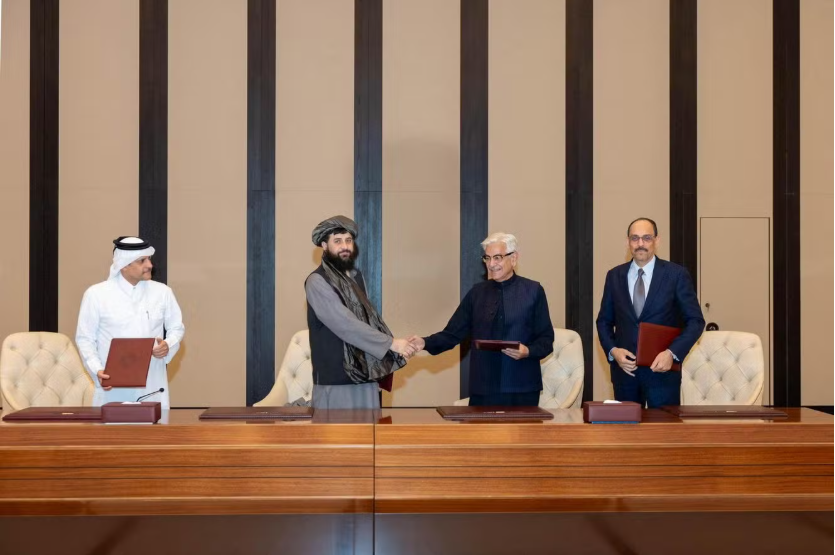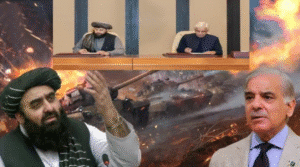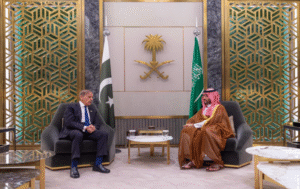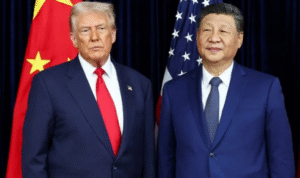Pakistan and Afghanistan Agree to Immediate Ceasefire Following Doha Talks

Meta-Description: Pakistan and Afghanistan have reached an immediate ceasefire after days of deadly border clashes. Mediated by Qatar and Turkey, the agreement aims to halt hostilities and set up mechanisms for lasting peace along the frontier.
Introduction
Pakistan and Afghanistan have formally agreed to an immediate ceasefire after a week of intense clashes along their border, during high-level talks in Doha. The negotiations were mediated by the governments of Qatar and Turkey, as both countries sought to defuse the worst escalation of violence between them in years. AP News+2Reuters+2
The agreement signals a significant shift in the bilateral relationship, though key questions remain about monitoring mechanisms and how each side will handle mutual accusations of cross-border militancy.
The Context of the Clashes
Escalation Along the Border
Over a 2,600 km (1,600 mile) stretch of disputed frontier, Pakistan and Afghanistan have been locked in increasingly severe skirmishes. The fighting intensified following Pakistani airstrikes in the Afghan province of Paktika and retaliatory attacks from militant groups operating along the border. Reuters+1
Officials from Pakistan blamed militants operating from Afghan soil for a suicide bombing that killed seven Pakistani soldiers and wounded 13 near the border. AP News+1 On the other side, Afghan authorities accused Pakistan of violating Afghan sovereignty and targeting civilians. ABC News+1
Diplomatic Risks
The hostilities threatened to spiral beyond a regional dispute. With both sides citing severe casualties, including civilian deaths, the risk of a broader conflict loomed large. Analysts noted that achieving a ceasefire required not just a pause in fighting, but a credible mechanism to address militant sanctuaries and ensure both nations honoured their commitments. The Week
The Doha Talks and the Agreement
A Mediated Process
In Doha, Qatar played a leading role in facilitating talks, with Turkey serving as an important mediator. The Doha negotiations featured ministers and senior officials from Pakistan and the Taliban-led government in Afghanistan. Al Jazeera+1
During the talks, Pakistan’s Defence Minister Khawaja Muhammad Asif and Afghanistan’s Defence Minister Mullah Muhammad Yaqoob led their respective delegations. Dawn+1
Key Terms of the Agreement
- Both countries committed to immediately halting hostile actions against each other. Financial Times+1
- A pledge was made to establish mechanisms for sustainable peace and verification of the ceasefire’s implementation. ABC+1
- Follow-up talks were scheduled in Istanbul on 25 October to flesh out details of implementation. Dawn+1
Pakistan’s Perspective: Security Demands and Preconditions
From Islamabad’s viewpoint, the ceasefire is conditional upon concrete action from Afghanistan. Defence Minister Khawaja Muhammad Asif emphasised that any militant incursions originating from Afghan territory would constitute a violation of the agreement. Reuters
Pakistan has long demanded that the Afghan government prevent groups such as the Tehrik‑e‑Taliban Pakistan (TTP) and other anti-state actors from using Afghan soil as a staging ground for attacks. Dunya News
Afghanistan’s Viewpoint and Challenges
While the Afghan side has agreed to the ceasefire, critics note that the Taliban-led government still faces significant hurdles:
- Denying Pakistan’s allegations that it harbours militants, while simultaneously lacking full control over all Afghan territories. Al Jazeera+1
- Addressing civilian casualty claims—Afghan officials say Pakistani strikes killed civilians including children and local cricketers, prompting the Afghan cricket board to withdraw from a Pakistani series. AP News+1
- Ensuring follow-through: a ceasefire is only as good as its monitoring and enforcement mechanism, something historic agreements have struggled with. Gulf News
Regional and Humanitarian Implications
Impact on Local Populations
The border region has endured heavy fighting—reports indicate dozens killed and hundreds wounded in recent clashes. Financial Times+1 For residents living near the frontier, the ceasefire brings immediate relief but also urgent questions about rebuilding and long-term security.
Diplomatic Significance
For Pakistan and Afghanistan, the ceasefire demonstrates a shared interest in avoiding open war. It also reflects the role of external mediators—Qatar and Turkey—in regional conflict resolution. Some analysts view this as an indication of shifting power-dynamics in South and Central Asia. RadioFreeEurope/RadioLiberty
Risks and Roadblocks Ahead
Monitoring & Verification
The major challenge lies in making the agreement operational. Without a credible verification mechanism, either side can accuse the other of violations, eroding trust.
Militant Hotspots and Proxy Dynamics
The agreement hinges on Afghanistan’s capacity and willingness to deny safe-haven to militants. Pakistan has made this a redline. If attacks resume, the ceasefire may collapse. Reuters
Domestic Pressure
In Pakistan, public anger over militant attacks and border security remains high. Any perception of weakness could politically backfire on the government. In Afghanistan, governance and control issues persist, reducing the Taliban government’s flexibility and credibility in the eyes of Pakistan and international observers.
Possible Scenarios Moving Forward
- Successful implementation: The scheduled follow-up meeting yields detailed protocols, joint monitoring teams, and a reduction in border violence.
- Partial compliance: The truce holds, but sporadic incidents occur; trust remains fragile and requires sustained diplomacy.
- Breakdown: A major attack or retaliatory strike could unravel the ceasefire, renewing large scale hostilities and raising the risk of wider conflict.
Conclusion
The ceasefire agreement between Pakistan and Afghanistan marks a crucial milestone in a relationship long marked by mutual suspicion and violence. For the first time in years, both countries have publicly committed to halting cross-border combat and refraining from supporting hostile groups.
However, as many observers caution: an agreement on paper is only the start. The success of this truce will depend on tangible steps—monitoring mechanisms, militant denials, and sustained diplomacy. If implemented effectively, this could usher in a period of relative peace along one of the world’s most porous and fraught borders. If not, the fragility of the arrangement will become immediately apparent.






